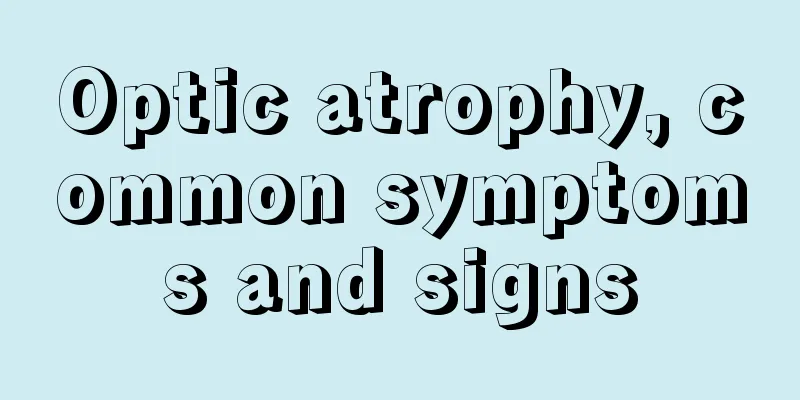It turns out that the symptoms of secretory otitis media are these 4 types

|
Secretory otitis media is a common ear inflammation in daily life. It is also called exudative otitis media or non-suppurative otitis media. It has a huge impact on people's hearing. Therefore, it is particularly important to understand the symptoms of secretory otitis media and treat it in time. In fact, the symptoms of otitis media in life are mainly manifested in the following four points, the most prominent of which is hearing loss. Symptoms of secretory otitis media 1. The skin around the patient feels "numb" and the patient feels depressed psychologically. 2. Earache: Acute cases may cause dull earache, which is often the first symptom of the patient. It may be continuous or cramping. In chronic cases, ear pain is not obvious. This disease is often associated with a feeling of blockage or stuffiness in the ear, which can be temporarily relieved by pressing the tragus. 3. Tinnitus: It is mostly low-pitched and intermittent, such as "crackling", buzzing and the sound of running water. When the head moves or when yawning or blowing the nose, a sound of air passing through water may be heard in the ears. 4. Hearing loss: decreased hearing and enhanced self-hearing. When the head tilts forward or toward the healthy side, hearing may temporarily improve (positional hearing improvement) because the effusion leaves the cochlear conduction. When the effusion is viscous, hearing may not change with changes in head position. Children are often brought to the doctor by their parents because of their slow response to sounds, poor concentration, and poor academic performance. If one ear is diseased and the hearing in the other ear is normal, it may not be noticed for a long time and may only be discovered during a physical examination. This is the end of the introduction to the clinical symptoms of secretory otitis media. We need to remind our friends that they should pay attention to changes in their ears in daily life. When they find symptoms such as tinnitus, they must pay great attention to it and go to the hospital for professional treatment in time. Diagnosis of secretory otitis media: 1. Tympanic membrane: The flaccid part or the entire tympanic membrane is invaginated, manifested by shortening, deformation or disappearance of the light cone, the handle of the malleus shifting backward and upward, the short process of the malleus protruding significantly outward, and the angle between the anterior and posterior folds becoming smaller. When fluid accumulates in the tympanic cavity, the tympanic membrane loses its normal luster and becomes single yellow, shiny orange-red or amber, and the light cone is deformed or displaced. Chronic cases may appear gray-blue or milky white, with dilated capillaries in the tense part of the tympanic membrane, short protrusions that are chalky, and the handle of the hammer appearing in relief. If the fluid is serous and does not fill the tympanic cavity, the fluid level may be visible through the tympanic membrane. This liquid surface is shaped like an arc of hair, called the hairline, with the concave surface facing upward. When the position of the head changes, its parallel relationship with the ground remains unchanged. Air bubbles can sometimes be seen through the eardrum, and the number of bubbles may increase after the Eustachian tube is expanded. Pneumatic otoscopy revealed limited tympanic membrane mobility. 2. Sound of pulling out a cork from a bottle: Press the tragus tightly and then release it quickly. Do this test on both ears separately. The patient will feel that there is a sound similar to that of pulling out a cork from a bottle in the affected ear. 3. Hearing examination: The results of tuning fork test and pure music hearing valve test showed conductive hearing loss. Hearing loss varies, and can reach around 40dB HL in severe cases. Because the amount of effusion often changes, the hearing threshold may fluctuate to a certain extent. Hearing loss is generally mainly low-frequency, but due to the changes in the structure of the middle ear vessel and the impedance of the two springs, high-frequency air conduction and bone conduction hearing can also objectively decrease. Hearing will improve after the effusion is discharged. The acoustic conduction phonogram is of great value for diagnosis. The flat type (type B) is a typical curve for secretory otitis media; the high negative force type (type C3) indicates poor function of the tympanic tube and some tympanic effusion. For those with significant hearing impairment, auditory brainstem response and otoacoustic emission tests should be performed to determine whether the inner ear is affected. 4. CT scans show that the air cavities in the middle ear system have increased density to varying degrees. 5. Secretory otitis media may develop into adhesive otitis media or complicated by tympanosclerosis. |
<<: Can hepatitis B virus carriers be contagious?
>>: There are many ways to treat cardiac asthma
Recommend
Is it okay to place the mirror sideways facing the bed?
Young people nowadays know little about Feng Shui...
What are the symptoms of internal bleeding? Do you have blood in your stool?
Internal bleeding is bleeding caused by internal ...
What are the biological treatments for lung cancer? Detailed explanation of specific biological treatments for lung cancer
Lung cancer is a serious disease that endangers p...
What is the reason for chest congestion after meals
Chest congestion means that there are some proble...
Which drugs are better for glioma
As the saying goes, "Illness comes like a mo...
What are the hazards of nucleus pulposus removal
Many clinical diseases require surgery to treat, ...
How long is the general survival period for renal cancer bone metastasis? Generally, the one-year survival period is around 50%
When renal cancer metastasizes to the bone, it me...
How long does it take for hormones to be excreted from the body
Many drugs are hormones. If a disease is caused b...
The most obvious sign of lung cancer
Lung cancer is a malignant tumor that originates ...
How long does it take to get the highest cure rate for tongue cancer
If tongue cancer is found in the early stage, you...
How to treat bulging blood vessels in the calves
Blood vessels are organs throughout the human bod...
What are the symptoms of lung cancer in the early stage? Several common symptoms of lung cancer in the early stage
Chest pain is a common early symptom of lung canc...
Clinical manifestations and symptoms of end-stage renal disease
Due to various reasons such as food, kidney disea...
Can nasopharyngeal carcinoma be treated biologically? How to take care of it?
There are many treatments for nasopharyngeal carc...
Steam vacuum cleaner
As our living standards get better and better, th...









